- Homepage
- News and Features
- Common disease found on golf greens
Common disease found on golf greens
Golf greens are particularly susceptible to turf diseases due to a combination of environmental, management and biological factors.
Causes of turf disease can include:
- High maintenance and stress: golf greens are maintained at low mowing heights to provide a smooth playing surface, which puts stress on the grass. This stress weakens the plants, making them more vulnerable to diseases.
- Monoculture: greens are often planted with a single species or variety of grass, creating a monoculture. This lack of diversity can make the entire green more susceptible to a disease that targets a specific type of grass.
- Heavy foot traffic: golf greens experience heavy foot traffic from players and maintenance equipment, which can compact the soil and damage the grass. Compaction reduces oxygen availability to the roots, making the grass more susceptible to disease.
- Irrigation practices: maintaining a balance between over- and under-watering is challenging. Excess moisture can create favourable conditions for fungal diseases, while insufficient water can stress the grass, making it more susceptible to pathogens.
- High nitrogen fertilisation: While necessary for maintaining lush, green grass, high nitrogen levels can promote rapid growth of tender, succulent tissue that is more prone to disease.
- Climate and environmental conditions: The microenvironment of a golf green, including temperature, humidity and air circulation, can create conditions that favour the development of disease. For example, high humidity and warm temperatures are ideal for the growth of many fungal pathogens.
- Pesticide resistance: Over time, pathogens can develop resistance to commonly used fungicides, making it harder to control diseases with chemical treatments alone.
- Poor air circulation: Greens surrounded by trees and other structures may have poor air circulation, which can trap moisture and create conditions favourable for disease development.
Due to these factors, maintaining healthy greens requires careful management, including regular monitoring, proper cultural practices and judicious use of fungicides.
What diseases can be found on golf greens?
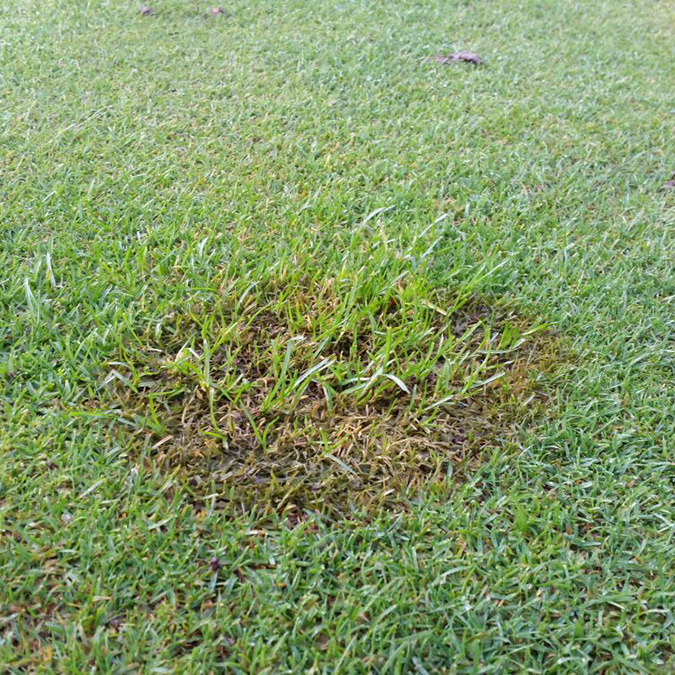
Microdochium (Fusarium) Patch
Symptoms
Early: Darkened water-soaked appearance of the grass
Late: Patches enlarge and may develop salmon-pink to orange-brown rings around the outside. White fungus may grow. Scars may not heal for many months.
Host
All grass species are susceptible, but annual meadowgrass is the most severely affected
Time of year
Common in spring and autumn, severe in autumn
Climatic
Mild, wet conditions, shaded areas with poor air circulation
Turf
Annual meadowgrass dominant swards, wet turf surfaces, excessive thatch laters
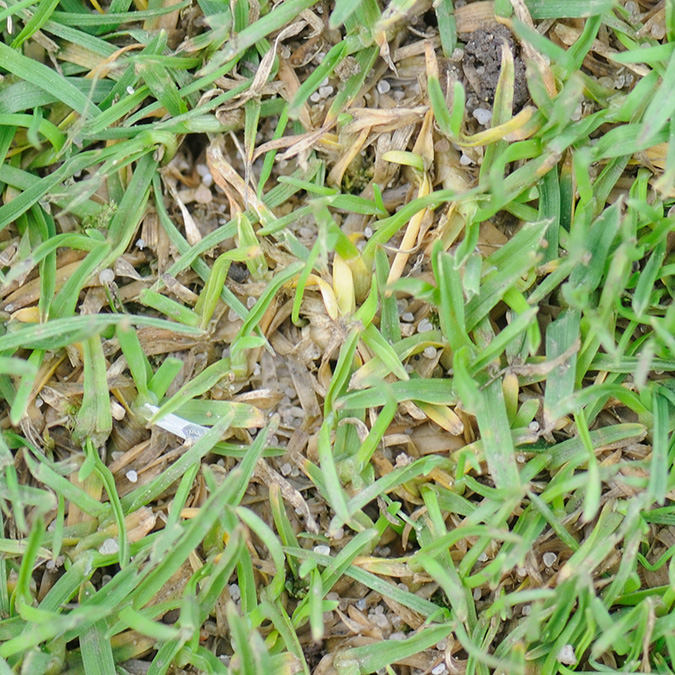
Anthracnose
Symptoms
Basal rot: red to bright yellow leaves, black rot at base of stem
Foliar blight: irregular patches of turf turn tan and die. Can appear drought-like
Host
Basal rot affects annual meadowgrass, but foliar blight can affect all grasses
Time of year
Basal rot: autumn and winter
Foliar blight: summer
Climatic
Basal rot: cold and wet situations
Foliar blight: warm and wet situations
Turf
High stress, low fertility, compaction, moist surface with dry soil, insect/nematode feeding, excessively low cutting
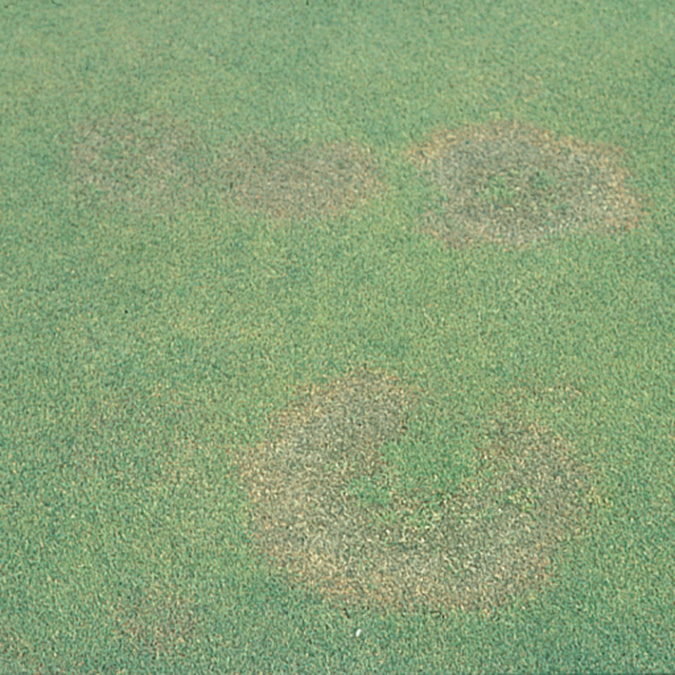
Take-all Patch
Symptoms
Bronzing of grass in the ring. Resistant species or broad-leaved weeds invade the centre of the patch.
Host
Bentgrass, occasionally annual meadowgrass
Time of year
Pathoden active in the spring, symptoms apparent in July and August
Climatic
Warm temperatures, moist soils
Turf
Newly-constructed sand areas, use of alkaline topdressing or irrigation water, poor drainage
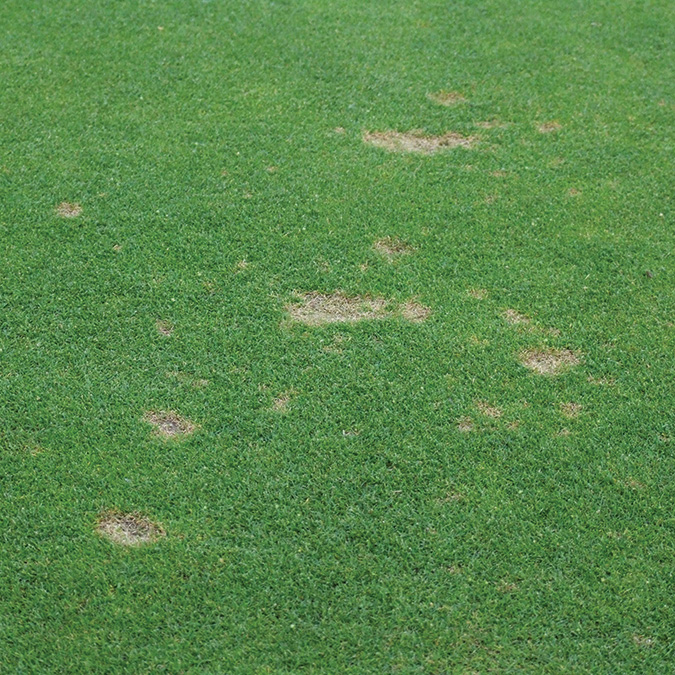
Dollar spot
Symptoms
Small spots of bleached turf on close mown turfgrass. May join to affect large area
Host
Fescue, bentgrass and annual meadowgrass
Time of year
Summer and autumn
Climatic
Warm weather and moist turf
Turf
Low fertility and surface wetness, especially heavy dews
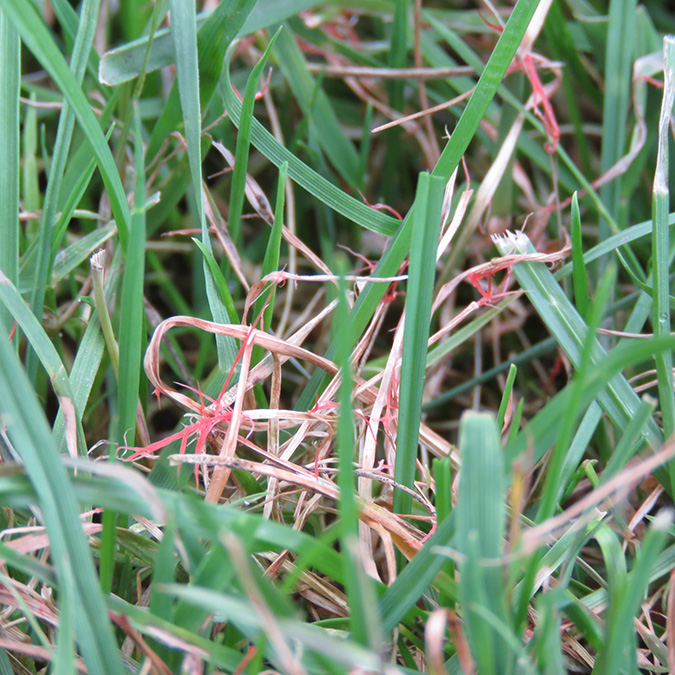
Red thread
Symptoms
Circular patches of dead leaves. Pale red needle-like growths
Host
Perennial ryegrass and fescues
Time of year
Spring to autumn
Climatic
Mild and humid, heavy dews
Turf
Low fertility, slow growing, moisture retentive, use of plant growth regulators
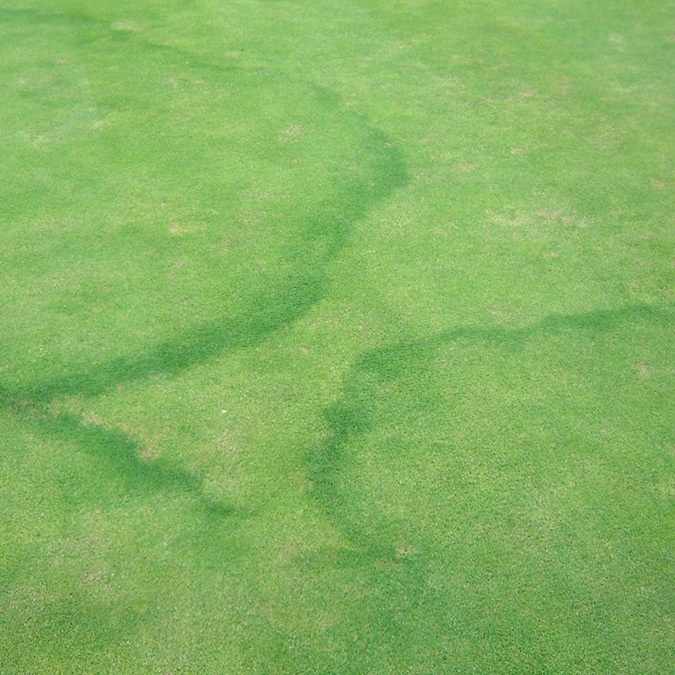
Fairy rings
Symptoms
Circular rings that may kill grass or damage it, stimulate grass growth or have fruiting bodies (mushrooms)
Host
All turfgrasses
Time of year
All year round
Climatic
Wet and dry cycles, warm soil temperatures
Turf
Light soils, free-draining rootzones, added organic matter in new conditions or thatch presence
Yellow turf
Symptoms
Small spots of yellowed plants that are easily pulled from the turf
Host
All turfgrasses
Time of year
All year round
Climatic
Cool, wet and humid conditions
Turf
Saturated rootzones due to flooding or poor drainage, low lying areas
Red leaf spot
Symptoms
Reddish brown lesions, patches of turf become dry and red-brown
Host
Bentgrass
Time of year
Growing season
Climatic
Warm weather, moist grass, overcast conditions
Turf
Leaf wetness, poor air movement due to shading, excessive nitrogen, excessive thatch, turf stress
Author

